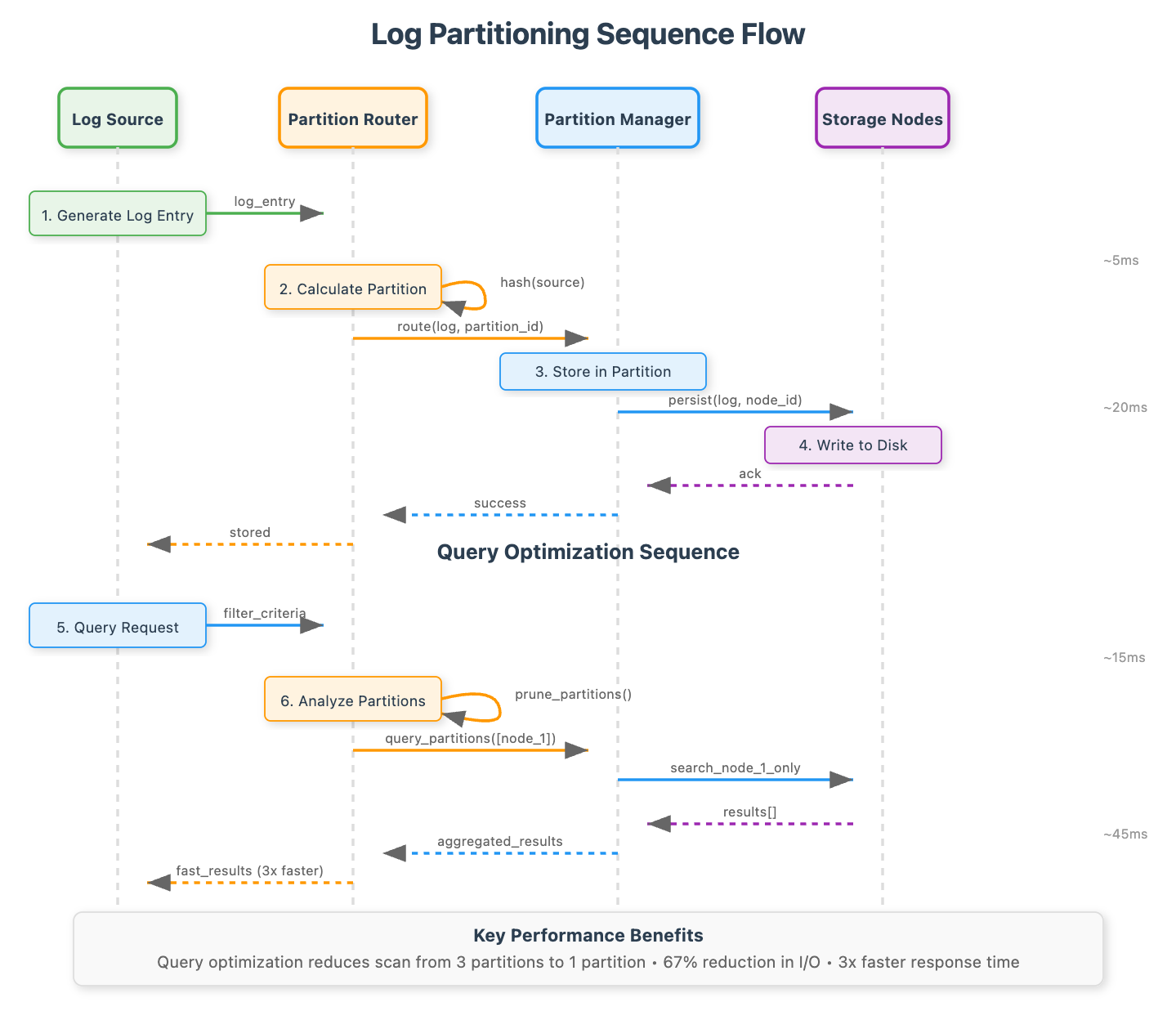Hey future system architects! 👋
Remember organizing your school locker? Math books on one shelf, science on another, sorted by class period? That's exactly what we're doing today with log partitioning - organizing millions of log entries across multiple storage nodes.
Why Partitioning Matters
Picture Netflix processing billions of viewing events daily. Without smart partitioning, every query scans every log entry across every server. Smart partitioning lets Netflix instantly find "all Marvel movie views from users in California today" by knowing exactly which partition holds that data.
The Two Partitioning Strategies We're Building
1. Source-Based Partitioning
Separate filing cabinets for different departments:
Web Server Logs → Node 1
Database Logs → Node 2
Authentication Logs → Node 3
Perfect for: Debugging specific services, analyzing component performance
2. Time-Based Partitioning
Organizing data by date:
January 2024 → Node 1
February 2024 → Node 2
March 2024 → Node 3
Perfect for: Time-range queries, log retention policies, archiving old data



